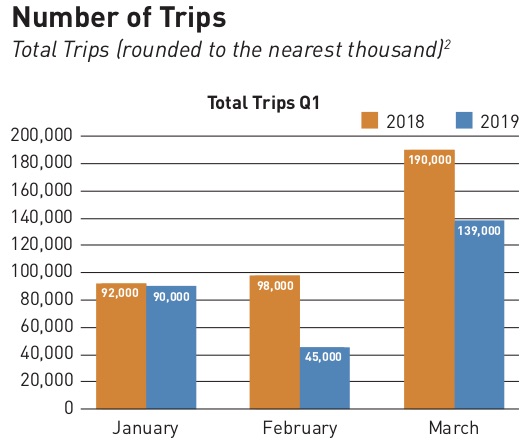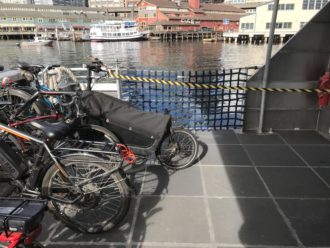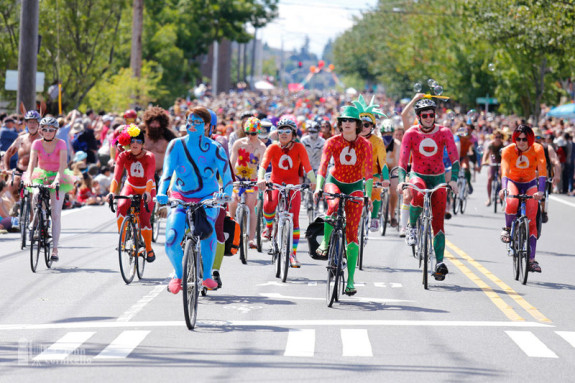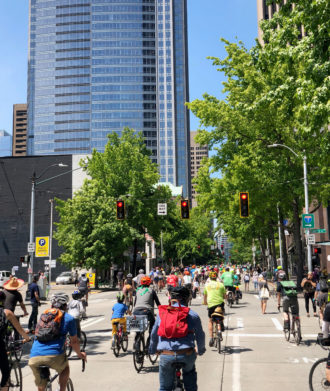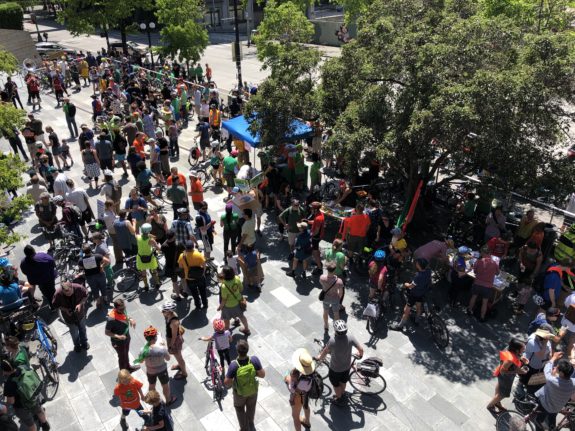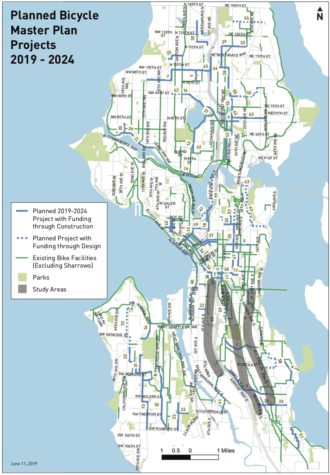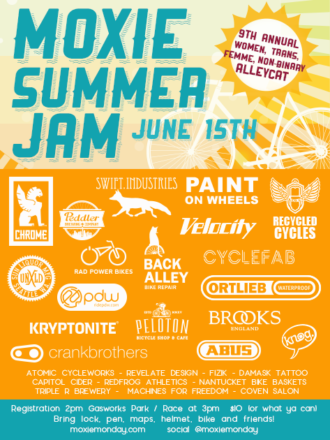 Hundreds of people rallied at City Hall then rode bikes, rolled in wheelchairs or walked down 4th Ave Sunday to protest recent cuts to safe streets projects.
Hundreds of people rallied at City Hall then rode bikes, rolled in wheelchairs or walked down 4th Ave Sunday to protest recent cuts to safe streets projects.
The Ride For Safe Streets, organized by members of the Move All Seattle Sustainably coalition, came just days before the City Council Transportation Committee was scheduled to hear about Mayor Jenny Durkan and SDOT’s latest version of their short-term bike plan, which slashes the previous plan.
“Families of color should not need to drive their children to their neighborhood school just because the only routes available are too dangerous to walk or bike,” said Jen Grant from Familybike Seattle, who helped lead a Kidical Mass ride to the event.
“Too often, the disability community is pitted against biking and walking and safe streets advocates, we don’t want that to happen” said Anna Zivarts of Disability Rights Washington’s Rooted In Rights project. “We all need to go places, we all need to go places safely. And we can do that. We can create that city. But we need to be working together and we need to be sure our opponents are using us against each other, which is what’s happening now.” Zivarts and Michael Forzano called on safe streets advocates to support their campaign to make sure bike and scooter share does not negatively impact disabled people navigating sidewalks. You can learn more in this recent op-ed in the Seattle Times.
Dr. Jeanna Wheeler of Seattle’s chapter of 500 Women Scientists pointed out that though the Washington carbon tax lost statewide, Seattle voters approved it by more than 68 percent. “To the hesitant elected officials who believe that bus lanes, new housing, bike lanes, walkable streets, all that, are political poison because they inconvenience driving and parking, please look again at 1631. Seattle voters are ready to support more than feel-good measures,” she said. “This is the new face of climate denialism here in our emerald city.”
“It is a shame that in South Seattle we will never see completed safe bicycle infrastructure without prioritization,” said Councilmember Lorena González. She encouraged the crowd to continue building the movement for safe streets.
“The city has done some good things. On paper,” said Councilmember Mike O’Brien. “We have committed to Vision Zero to make sure our city is safe for all road users. We have an ambitious Climate Action Plan that says we’re going to eliminate all carbon emissions in our city. We have bike/ped/transit master plans that lay out a road map to do that. The plans are there, folks. we have some work to do to get those implemented.
“I got six months left, folks. My commitment to you is to get our green transportation infrastructure in place and the policy infrastructure in place at the city before I say farewell,” he said (Full disclosure: My spouse Kelli works in O’Brien’s office as a legislative aid).

(more…)
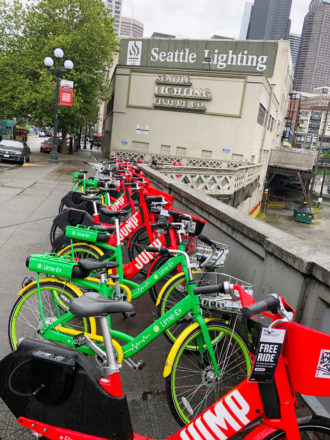 Seattle’s ongoing experiment with private, free-floating bike share has changed the landscape for biking in the city, helping to raise city bike counts to record heights.
Seattle’s ongoing experiment with private, free-floating bike share has changed the landscape for biking in the city, helping to raise city bike counts to record heights.